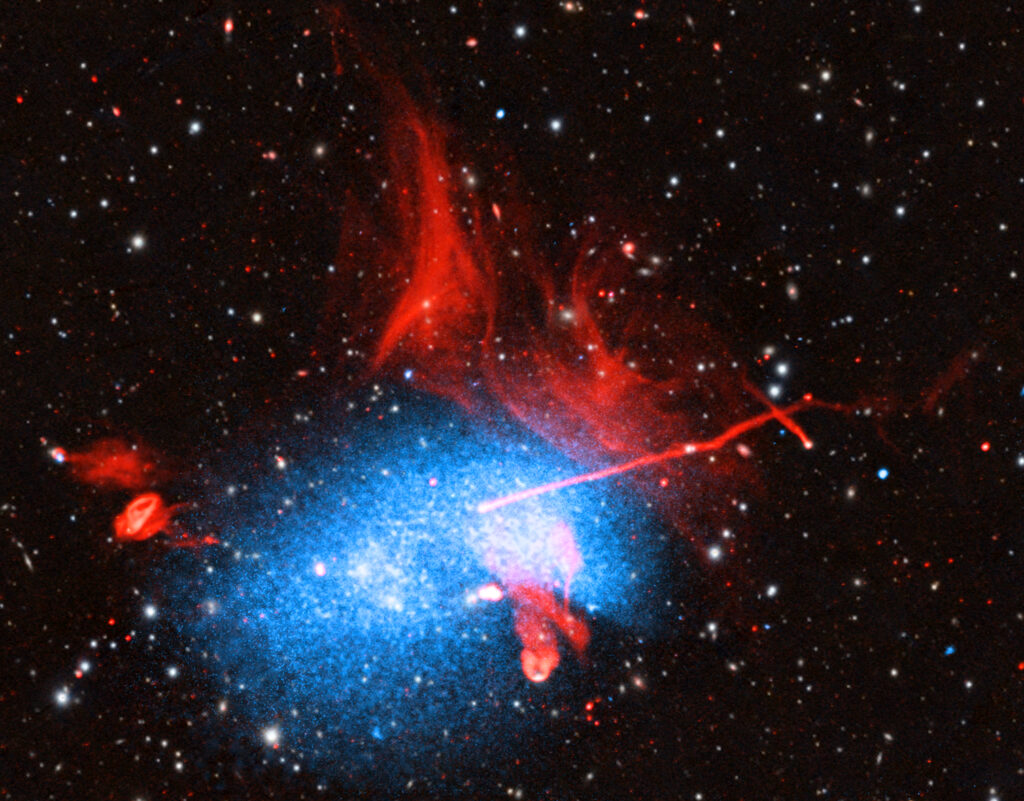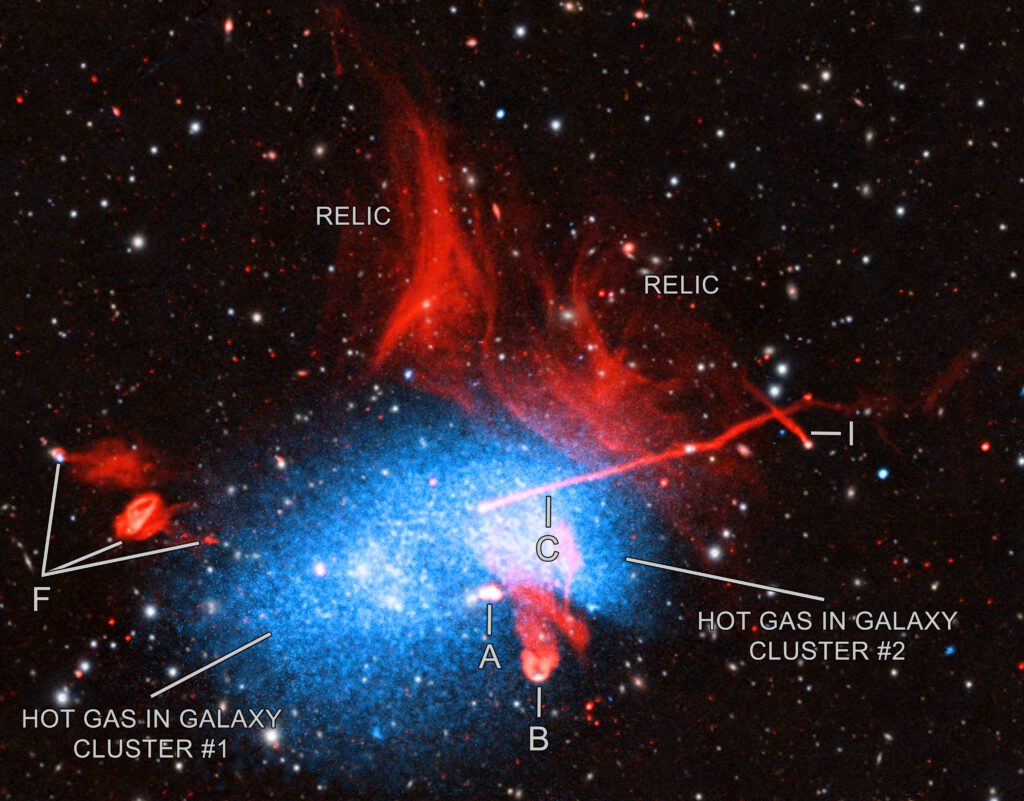An international team of astronomers has published a spectacular image showing a grand collision involving at least three groups of galaxies. It was obtained during observations made by the Chandra and XMM-Newton X-ray observatories, as well as ground-based radio telescopes.

The published image shows Abell 2256: a galactic cluster located at a distance of 780 million light-years from Earth. Astronomers have studied it in order to determine its origin. Such galactic clusters are one of the largest objects in the Universe. They consist of hundreds or even thousands of galaxies and contain huge volumes of gas heated to a temperature of millions of degrees. This gas is a source of X-ray radiation. That is why the researchers used Chandra and XMM-Newton to map its structure.
Analysis of the data collected by the telescopes showed that Abell 2256 was formed during a collision involving at least three different groups of galaxies. In the image published by the researchers, the blue color corresponds to data in the X-ray range collected by Chandra and XMM—Newton; red — data from GMRT, LOFAR and VLA radio telescopes; white and yellow — data in the visible light and near infrared range of the Pan-STARRs celestial survey.
The Abell 2256 radio emission has a complex nature. One of its sources is the galaxies themselves, or more precisely, their nuclei, in which supermassive black holes are located. They produce jets which particles either rush into space in a straight line (letters C and I in the annotated image), or collide with surrounding gas clouds and slow down, which leads to the formation of complex structures (letters A, B and F).

Radio waves also come from huge filamentous structures (marked as “relics”), mostly located to the north of radio-emitting galaxies. They probably formed when the collision created shock waves and accelerated particles in the gas more than two million light-years away.
Finally, near the center of the collision there is a “halo” of radio emission. According to the model developed by scientists, it can be caused by the repeated acceleration of particles with rapid changes in temperature and gas density caused by the consequences of a galactic collision. However, this model cannot yet explain all the features of radio data. Therefore, the researchers intend to continue studying Abell 2256 and other similar objects.
You can also read about how Chandra helped astronomers find hundreds of hidden black holes.
According to https://www.nasa.gov
Follow us on Twitter to get the most interesting space news in time
https://twitter.com/ust_magazine
